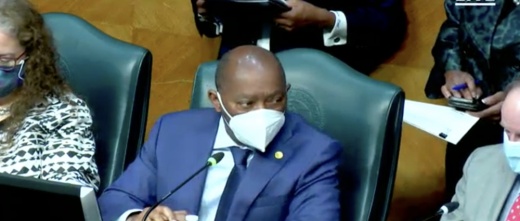The contract with ShotSpotter—approved at the cost of $3.5 million for five years—comes with the support of the Houston Police Department as it works to keep up with rising homicides and gun violence in the city. However, the a lack of data on the technology raised questions among some council members and public commenters over its effectiveness.
The item, put on the agenda at the request of District C Council Member Abbie Kamin, passed with the support of the entire council with the exception of at-large Council Member Letitia Plummer. Plummer said there was not enough specific data available to determine the program's effect on homicides and arrests.
She also expressed concerns about sending officers to the scene of a shooting with no information beyond the fact that shots were fired.
"When they get information that a shot is fired, often times they need a lot of information and data—what the person looks like, what are they wearing—and they don’t have any of that information," Plummer said at the Jan. 5 meeting. "If we’re going to spend this amount of money on technology, we have to make sure that it actually is working."
The item was tagged by at-large Council Member Mike Knox, a former Houston police officer, at the council's Dec. 15 meeting. Knox said he was concerned about the lack of data available to help inform the city's decision. Knox voted in favor of the program, but said he wanted to see HPD do more research into the costs and benefits and to get a better idea of what it is and is not accomplishing.
"I like the technology, but I don’t think that we’ve done an accurate assessment of what this program’s potential is and whether it's useful or not," Knox said. “This [data] is worse than useless. It presents the image that this is a great thing, but there’s not actually data or conclusions that can be reached based on the statistics provided.”
Proponents of ShotSpotter said it gives police officers a precise location of where shots were fired, allowing them to go directly to that location instead of driving around based on information provided by a 911 caller, who may not know where the shots came from. The technology works by using "acoustic sensing to identify, discriminate and report gunshots to the police within seconds of the shot being fired," according to information submitted to the council.
"A lot of the folks that are doing the shootings are doing them in one area, and when you identify them via text to a district police station instantaneously, and it gives those folks the ability to target in on that area and possibly save a single life or many lives; you can’t put dollar values on that," District E Council Member Dave Martin said prior to the council vote.
Others said simply knowing the technology is in place could make some people think twice about firing a gun.
Many council members who voted in favor of the program said their votes were based on community feedback, including Kamin, who said her conversations with HPD also led her to request the item be placed on the agenda.
"I don’t know of a neighborhood that is not asking for this right now,” Kamin said at the Jan. 5 meeting.
Houston Mayor Sylvester Turner said he understood the concerns about the data but emphasized the program was meant to complement the city's other crime reduction efforts, including hiring more police officers.
"No one element is the answer, but it’s all of these tools being done collaboratively to help reduce crime," Turner said.
Several public commenters also spoke out against the item at the Jan. 5 meeting. Commenters who opposed the program called for the city to invest the $3.5 million in other areas, including improving Houston's 911 system and paying emergency responders more.
"The council needs to do a little bit more community outreach with a wider range of stakeholders, not just homeowners and not just super neighborhoods, to understand people who are going to be directly affected,” District C resident Katya Abazajian said at the Jan. 5 meeting.
Houston has seen a rise in homicides over the past several years that continued into 2021, during which HPD said homicides went up 17% compared to 2020. However, that 17% number represents an improvement from where the city was around midyear, Turner said. In July, homicides in Houston were up 43% compared to the same time frame in 2020, he said.
The approved contract will cover 10 square miles within the city in total, including the parts of south Houston under the pilot program and a second location that has not been announced.
With the contract approved, HPD will now be required to make reports to the committee and to City Council with details on response rates and the general effectiveness of the technology, Kamin said.





